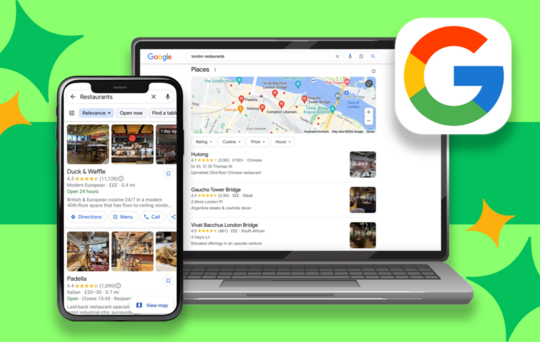How to make a restaurant business plan

While to you, the countless hours spent planning and visualising your restaurant will have left a clear understanding of your brand identity, investors and other business partners won’t know what your restaurant is all about — yet. Creating a restaurant business plan is your chance to prove you have a clear idea of how to get your restaurant started.
A restaurant business plan encompasses everything from your potential opportunities to your limitations. It is a roadmap that will help you choose the best course of action and predict your chances of success in the industry.
Although there is no such thing as a fixed restaurant business plan ‘template’, there are some indispensable variables that go into creating one. Here, you can find a comprehensive step-by-step guide to starting your restaurant with essential tips to help ensure your future success.
Executive Summary
The executive summary is your restaurant’s ADN, providing a concise overview of your dining establishment’s mission, vision and main goals.
Let’s delve into these elements to understand why they’re the backbone of your venture.
Your mission describes what the business hopes to accomplish, while the vision gives a grander vision of your future, reflecting your growth and development expectations.
Goals are the periodic milestones your restaurant business plan hopes to achieve. However, they are not as abstract as your mission and vision statements. As concrete stages of your culinary journey, they need to be attainable, smart, measurable, realistic and specific.
How to make a restaurant business plan?
Creating a comprehensive restaurant business plan may feel overwhelming. It’s not just a matter of facts and figures, or even the food you’ll serve. This document will guide you through every stage of the process.
Below, we have identified some key steps that will help you overcome any obstacle you’ll find on the road to your restaurant’s success.
Try TheFork Manager today
Restaurant concept and initial analysis
The first logical step is outlining detailed restaurant characteristics as a launchpad for project development.
✔ ️The type of business you wish to market: Family, traditional, specialised, a macro restaurant, a franchise, a small bistro, a tapas bar, etc.
✔️The type of cuisine you wish to serve: Fresh market cuisine, signature dishes, creative cuisine, traditional cuisine from a region, international cuisine, green-friendly cuisine, vegan cuisine, etc.
✔️A profile of your potential customers: Women, men, Gen-Z, families, couples, executives, tourists, students, etc.
✔ ️The location and its characteristics: What type of area are you interested in and why? What are its advantages? Can you rely on regular footfall or is it a quiet area? Is it a business and office district or a leisure and recreational neighbourhood?
By determining this information, you can build a core profile for the business you are going to set up before tweaking these characteristics to increase your chances of success.
Market and competitive analysis
The second essential step is to observe your restaurant's direct and indirect competitors, as well as the general behaviour of the target market you seek to enter, especially in comparison with your business characteristics.
✔️Market potential: You should always consider your cuisine — is it following an industry trend or likely to have many economic prospects? Can it appeal to diverse customers?
✔ ️ Market limits: Are there challenging weather conditions, a saturation of similar restaurants, or low customer purchasing power in the area?
✔️The competition's potential: Do they use top-tier products and have very accessible prices? Perhaps they also present a creative and varied offering or a more specialised and personalised menu. Moreover, they might also have a good reputation or a long history in the area.
✔ ️ The competition's limits: Do they have similar market offerings but a scant digital marketing presence? Do customers complain about certain dishes, a lack of space, or uncomfortable decor? Look out for a lack of technological management tools, reports of service delays, etc.
Using this market analysis, you can incorporate new elements into your initial restaurant profile and capitalise on them. For instance, if you determine that most of your competitors have bland or unattractive decor, you can strategically decide to prioritise creating a comfortable and modern dining atmosphere.
This is applicable even if customers in your target market demand certain ingredients; you would already know that including them in your menu would be essential.
Restaurant marketing strategy
Using all of this acquired information, you can move on to the next step, which is a bit more complex and consists of defining the bread and butter that will sustain your business and its launch: your restaurant marketing plan.
✔️Verify the restaurant's production capacity. You must determine how many diners you can serve and how many meal services to carry out daily and weekly. For these considerations, you should think about the location's space and the production capacity you can handle for the market launch.
✔️Create the food selection. Now, create a debut menu that is delicious, attractive and, above all, profitable. You should be clear and concise during menu design, yet not too extensive or overly straightforward. Your potential customer is what truly matters. Your a la carte must include dishes to satisfy the taste buds of your clientele. Also, you need to define the ingredients you will use, the quality and freshness you are happy with, who your supplier will be, and an estimate of the anticipated cost.
✔️Define the ambience and facilities. What type of environment do you wish to create? At this point, it is crucial to determine if you already have a location and what its potential is. If you have an empty space, it may need a complete overhaul. You will also need to calculate the estimated renovation cost, especially if you are considering introducing sustainable facilities or using specific materials.
✔️Determine a communication strategy. Which channels will you use to promote your business? Which measures will you take for its launch? How will you advertise your offering? Social media, specialist websites like TheFork, search engines, flyers, and partnerships with businesses in the industry can all help. And, of course, you should also decide whether to hire a marketing agency or professional to work on these tasks, subject to a detailed cost analysis.
Financial plan
You have arrived at the most crucial step in your restaurant business plan: accounting for all the costs and profits that you forecast for your business. In this step, you should determine the following:
✔️Type of company. Will you start a company with invested partners, and will you have employees? Will the owner register as a self-employed worker conducting a business activity? What will be the legal format of the business? Most importantly, what taxes and legal contributions must you add to your calculations?
✔️Management plan. Begin by quantifying the number of employees you need to begin your venture and estimate their projected salaries, taking into account the target market. In addition, you need to think about the cost of necessary equipment, machinery, tools, and any other operational fees to open the restaurant.
✔️Initial investment and upfront expenses. Determine how much money you will need to start your business, as well as your fixed and variable costs for a specific period. It is important to consider that your business plan needs to be flexible due to the perennial nature of the restaurant industry.
✔️Sales percentage. Now, determine how much to charge your customers based on your outgoing costs. With these in mind, how much do you need to make in sales within a certain period? This stage is fundamental as it will help you cover the initial investment and operational expenses.
✔️Profitability estimate. Armed with these forecasts, you can predict a timeline for profitability within your business plan. The most effective ways to make these figures a reality are to achieve a high occupancy rate and manage fixed and variable costs well to ensure continuous benefits.
Quite a task! Have you ever drafted such a plan before?
Remember, this is just a summary of the essential considerations for creating a restaurant business plan. Restaurant management is a highly complex project that naturally grows based on the business. In any case, we hope that this serves as a guide to get you started.

















